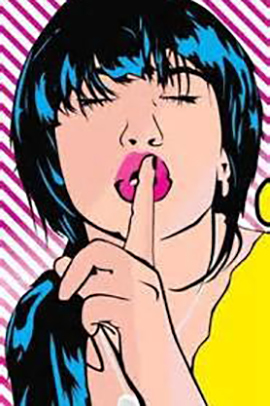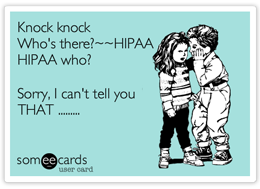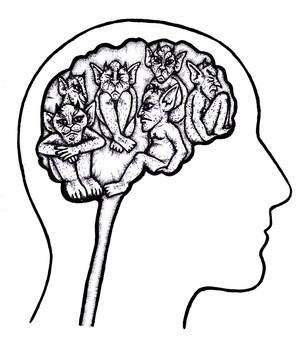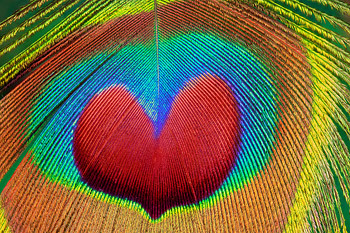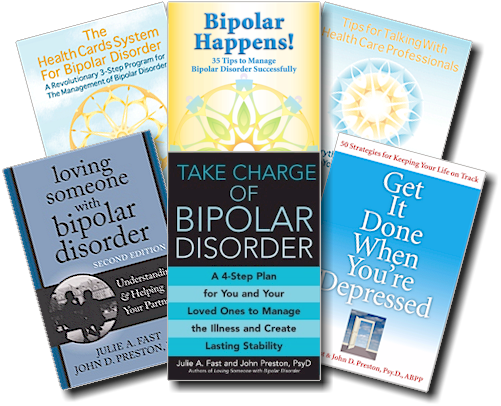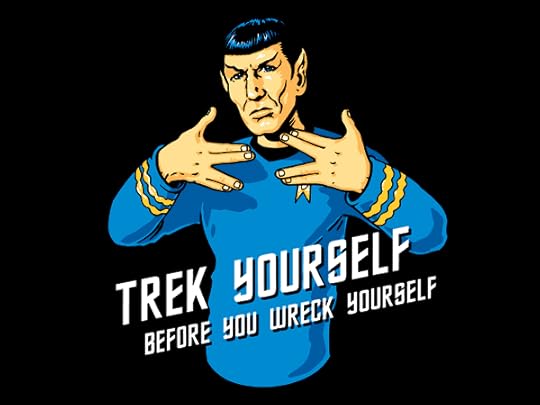Julie A. Fast's Blog, page 34
September 30, 2016
Positive Changes in Our Bipolar Disorder World
I’m writing today to share good news about the changes I see in our mental health world. I’ve been rather despondent for years regarding the struggles we all seem to go through due to bipolar disorder. This includes those of us with the illness as well as the families, partners, friends and health care processionals who want to help us live stable and productive lives.
What is the good news?
We all know more help is needed from the outside world, especially in terms of government support and today I see it happening. If you’re on Facebook, you know they often share old posts where you can see what you in the past. This morning, I saw a post from two years ago where I wrote:
How many more times do we have to say that our mental health system here in the United States is broken before something is done about the problem? It’s catastrophic and I don’t see any change.
We have to take charge and make change happen from our end. Julie
Well, guess what. I see change! I see the tide turing, the sun glowing and the moon rising. I see conversations I NEVER thought possible two years ago. Here is the positive news.
1. Marijuana and Mental Health Disorders: I was on the radio last week to talk about high THC marijuana and the risks it MIGHT pose for those of us with bipolar disorder, schizophrenia, depression and anxiety. There was zero backlash. The conversation was moderate and loving. The audience was receptive. We educated without shaming. We offered information without judgement. We changed the world one moment at a time. Now people who have mental health disorders can say to themselves, “If I’m smoking weed to feel better and relax, I can look for a low THC, high CBD strain so I don’t get psychotic or manic.” This is music to my ears. Bravo!
Note: I choose not to use any form of marijuana as it makes me very ill. I tried it when I broke my back in a biking accident and though it helped my pain, it caused too many bipolar disorder symptoms that I could not tolerate. I now believe in a harm reduction, moderate approach in talking about the topic. I have learned and grown in my crusade to educate the public about high THC marijuana.
2. Family and Partner Support Through HIPPA Reform: HIPPA reform now! Thanks to the people in politics who have experienced the devastation of trying to help a loved one who is psychotic and or manic get help in today’s society, HIPPA is finally going to change and parents, partners and other people who care will have ACCESS to a person’s medical needs. (HIPPA is a privacy act that 100% limits access to medical information unless the person receiving the information signs a release. When a person is very manic or psychotic, they will rarely sign the release.)
Note: As a person with bipolar disorder, I’m not able to do advocacy work in public due to the symptoms it creates. I know. It’s a bummer to want to get out there and go political on everyone, but I have to stay stable. Thank you to the amazing people who can advocate for those of us who can’t. I can advocate with my words. I can let others do the walking and talking.
3. Mental Health and Violent Behavior: Two days ago, on NPR- our national public radio station here in the United States, I heard a state governor say, “Until we fix our mental health system, we will not be able to deal with our gun violence.” This is the first time since I started writing about the SILENT majority problem of violent behavior in mental health that I have heard someone say this openly in relation to our shooting epidemic in the United States. Let’s stop trying to tell the world that people with serious mental health disorders such as bipolar disorder and schizophrenia are not violent. It’s not true. All of us who get manic and psychotic have the capacity for violence. Families should not have to suffer in silence. It’s nuanced. It’s not black and white.
Note: I have been shocked and appalled at the response I have received over the past five years when I talk about possible violent behavior in mental health. It’s as though I said we all have two heads. Many people reading this have been my coaching clients. You know there is violence in mental health because you live it. I know about it because my dysphoric mania makes me have violent thoughts and behaviors. We can tell the truth.
There are so many positives here.
The above are just three ways I see our world changing in a positive direction. I’m a cock-eyed optimist who will never give up in my quest to educate the world on what those of us with bipolar disorder and other mental health disorders need.
Just two years ago I talked about all of these topics regularly and was bullied and shamed online. (This was rather stressful!)
Now, they are public news.
We are growing and changing. I feel good about this. Social media is working. We are joining hands and telling our reality of living with mental health disorders. People are listening.
Julie
Related posts:
Why is it so Hard to Get Help for People with Bipolar Disorder Who are Ill and Smoking Pot?
World Celebs News Daily Website and the Catherine Zeta Jones Video
We need to talk: Violent Behavior in People with Mental Health Disorders
September 8, 2016
Bipolar, A Day in the Life of …. Me
 A day in the life of me…. All I want to do is write. I want to finish my books, write my Bp Magazine and Psychology Today blogs. I want to make my videos, see my friends and family and get on with life.
A day in the life of me…. All I want to do is write. I want to finish my books, write my Bp Magazine and Psychology Today blogs. I want to make my videos, see my friends and family and get on with life.
Bipolar disorder DOESN’T CARE about any of this.
Bipolar disorder is a very complex illness with incredibly intricate symptoms that weaves its way into every fiber of my being.
Today was a challenge and sometimes when it gets time for bed, all I can do is say thank heavens I made it through another day of this rotten illness.
I am saying thank you now simply because this is my policy. I am thankful I have a management plan that works. Otherwise, today would have been a @#$! storm.
I am thankful for my mother and nephew. They understand me.
I am thankful I have clients who can deal with my emails being a bit late. Bipolar never affects the quality of my work, but it affects my ability to answer email. Go figure!
I am thankful this kind of day isn’t every day anymore. For many years, my life was all bipolar. All of the time.
Now, my life is much better! Today was an aberration.
I can live with a day of bipolar.
Tomorrow, you better watch out because I’m going to get things done!
Julie
Related posts:
A picture of my family
My Mother is Getting Minor Surgery…..
Tips to Talk with Kids about Bipolar Disorder and Life in General
August 29, 2016
The Humdinger Bipolar Downswing

My bipolar depression episode has ended. It was three weeks and it was a humdinger. Here is a picture of a humdinger. I can’t stress enough that the BEST thing about bipolar disorder is that it’s an episodic illness. Episodes end. Every day I would wake up and say,
“This is the day I get out of this horrific episode.”
Eventually it worked.
I spent at least four to five hours a day working on bipolar disorder management tools I know have worked in the past. Especially the strategies in Get it Done When You’re Depressed.
You can get better. Your loved one can get better. Your client can get better. My depressions used to last for years. They now last weeks at the most.
Think of reducing the length of your mood swings as a goal. This helps me find success.
Julie
Related posts:
You Can….Get it Done When You’re Depressed
It Takes Longer to Worry About Something than to Do Something!
No Drama Bipolar Lifestyle
August 28, 2016
Guest Blogger Martin Baker on Bipolar Disorder and Creating Strong Friendships
 High Tide, Low Tide: Our Transatlantic Best Friendship
High Tide, Low Tide: Our Transatlantic Best Friendship
—by Martin Baker
“I know what you could do, Marty! You could write a book about what it’s like to be friends with someone with bipolar disorder.”
October 2012. The English Lake District. With those words, my American best friend Fran changed my world. Not for the first time. We’d been friends since meeting online the previous May. We would not meet in real life (as they say) until June 2013, but despite living 3,000 miles apart, we’d grown a strong, mutually supportive friendship that had weathered episodes of wild mania, depression, debilitating pain and fatigue, with suicidal thinking never far away.
Fran Houston, my best friend, lives with bipolar disorder, chronic fatigue syndrome (CFS/ME), and fibromyalgia. These are her diagnoses. They shape her days, but they are not who she is. As we shared our lives through social media, voice, and video calls, we learned what needs to be common knowledge, but isn’t: that caring relationships between “ill ones” and “well ones” are not only possible, but can be deeply and mutually satisfying.
We also learned it doesn’t matter where you are in the world—which is great, because friends and loved ones often live far apart. In the Internet era no one is too far away to be cared for, or to care. That is our message, and it is a message of hope.
Four years on, and our book—High Tide, Low Tide: The Caring Friend’s Guide to Bipolar Disorder—is about to be published. It’s been quite a journey. We hope our book will inspire and inform others who want to support a friend with mental illness. But High Tide, Low Tide is neither the only, nor the greatest, reward.
Fran is still alive. She has told me many times she would not be here if it was not for our friendship. There’s no way to know how true that might be, but I take her words at face value. To some, that might appear to put an inordinate strain on me and our relationship, but it doesn’t. We are not still friends because either of us is afraid of what might happen if we were not. We are friends because we want to be, and because—well or ill—that is how a committed friendship works.
I am more than I was. These five years have challenged me to be the best I can be. More, they’ve helped me discover who I am. I knew little about mental illness, stigma, and discrimination before I met Fran. I knew less about empathy, compassion, and caregiving. I still mess up, of course, with Fran and with other people. But I’ve grown. I am more aware than I was. I am more than I was. I am a better friend, father, and husband—a better man—than I was or would otherwise have become.
I have found my tribe. I never felt I belonged anywhere, outside of my immediate family. I found a best friend, but also the joy of connection with people at home and the world over; people who know how to live genuinely and honestly. That is joy indeed. I have found my voice and discovered I have something to say. I have found my place in the world.
High Tide, Low Tide: The Caring Friend’s Guide to Bipolar Disorder, is released by Nordland Publishing, October 2016.
About the Author
Living in the north-east of England, Martin Baker is an ASIST trained Mental Health First Aider and Time to Change Champion. A member of the National Alliance on Mental Illness, Mind, and Bipolar UK, Martin is primary caregiver and lifeline to his best friend Fran Houston. Passionate about making invisible illness visible, Fran lives in Portland, Maine.
Social Media Links
Related posts:
Embracing the Journey. Guest Blogger Martin (Marty) Baker: Author of Gum on My Shoe: One Step at a Time with My Bipolar Best Friend
Newsletter: Keep Your Friendships Strong! Focus on Facts- not BIPOLAR Disorder FEELINGS!
How are your friendships these days?
August 24, 2016
The Day is Never Lost…
….. if we can eventually use our experiences to help others. I believe this. Julie
Related posts:
Another day lost to bipolar disorder… but the evening is mine!
August 23, 2016
Three Nasty Bipolar Disorder Symptoms that are not Mania and Depression!
Three bipolar disorder symptoms you probably think are a personal failing:
1. Inability to sit down and work like you know you should be able to and could do if only… you could sit down and work darn it!
2. Restlessness.. Nothing feels good. From chairs to people.
3. Lack of insight as to why I struggle so much in daily life.
Here is why this list is important. I HAVE THESE SYMPTOMS WHEN I’M NOT MANIC OR DEPRESSED.
I remember when I wanted to say that bipolar disorder was more than mania and depression and my publishing company said, Nope, it’s a mania and depression illness. We can’t say that the above are actually symptoms. They are a subset of mania and or depression.
Well, I know have ten more years of experience than when I wrote my book Loving Someone with Bipolar Disorder and now know for sure that we have baseline symptoms that are present when we are not manic or degreased. They
Here is how I over come these symptoms. I wrote Get it Done When You’re Depressed for #1. I use the tips daily. I still struggle, but at least I am able to do my foundational work very well. Coaching. Writing is my challenge.
The second symptom is also discussed in Get it Done and darn it, if it’s the last thing I do, I will figure this out. Diet and caffeine play a role here as does my surroundings.
Lack if insight. How do I deal with this? I remind myself that I have lack of insight. This doesn’t always give me insight, but it does let me go easier on myself.
Be kind to yourself Julie, Be Kind.
This is a complex illness- I call it the garbage pail illness as we have symptoms of ALL mental health disorders on any given day.
I believe in your and your ability to manage this illness. If I can write this post while crying due to a panic attack and then feel better simply from writing the post, it means that you can work and get on with life even when the bipolar is messing with your brain chemicals.
I will not stop until I have come up with a better plan for my life. I am close. I have come so far. If you are newly diagnosed, Take Charge of Bipolar Disorder explains my plans. If you want a more advanced management system, especially if meds don’t give you enough relief, my Health Cards Treatment System for Bipolar Disorder is available on my website BipolarHappens.
I know, this is a long post. This is how I heal and make it through the day so that I can now do my email without crying.
You can get better! I can get better! Julie
My new book for kids has too characters named Wimple and Weejit. My illustrator, Kaytie Spellman must see inside my mind. This is exactly what they look like when they are messing with my brain chemicals. HEHE.
Julie
PS: Read the three symptoms again. Do you experience these during your daily life? What triggers them? How can you get help?
Related posts:
Odd depression and mania symptoms of bipolar disorder
Pt 1 What are the Symptoms of Bipolar Disorder Dysphoric Mania?
Bipolar Disorder Depression Symptoms
August 19, 2016
Mean Bipolar Downswings: Check Yourself Before You Wreck Yourself!
When overwhelmed, negative mood swings arrive, they can bring out some very unsavory behavior.
1. No table at a restaurant pleases.
2. No food tastes good.
3. Driving causes road rage.
4. Life feels very difficult.
5. It’s hard to find a comfortable place to sit.
6. Work is scattered.
7. The body is out of whack.
8. People get on the nerves.
9. Life is too busy.
10. We want a different life.
When I have one of these mood swings, I recognize that I’m overwhelmed and I take action. It usually takes me hours to get myself to calm down and those are often lost hours. I have to stop myself from driving randomly. I will park, go in a place, feel uncomfortable and leave over and over again if I let myself. I will eat sugar to feel better and to calm down. I will snap at people and yell and scream and pedestrians who do something stupid.
I don’t want to be this person, so I check myself before I wreck myself.
Julie
Related posts:
Bipolar Disorder Mania Check In
Bipolar Disorder and Suicidal Depression Downswings
Reader Comment: Success and bipolar downswings
Bipolar Disorder, Anxiety and Panic Attacks: How to Calm the Heck Down!
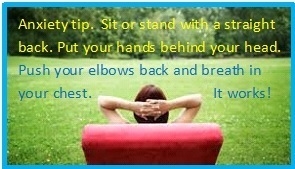 I have a lot of work to do today. I created the work. I want the work and darn it, I’m going to do the work. Getting myself in a space where the work is possible is a challenge. Here is what I’m going to do.
I have a lot of work to do today. I created the work. I want the work and darn it, I’m going to do the work. Getting myself in a space where the work is possible is a challenge. Here is what I’m going to do. 1. Notice the position of my shoulders. Yep. Up against my ears. I just lowered them. Doing this helped me take a natural and deep breath.
2. Focus on breathing. I put my arms behind my head and clasp them together. I push my shoulders back and breathe.
3. Go through a short EFT tapping session. Ah, that feels better. I am now back in my body instead of floating with anxiety.
4. Create a short to do list. Get it Done When You’re Depressed reminds me that to do lists can be short and in the moment. I have one task, to answer email and bill my clients. I have five hundred other things I need to do as well, but this is what comes first. So my to do list can be short. Answer email. Send invoices. I don’t have to make the list any longer than this.
5. Feel the anxiety and do it anyway. Work anxiety is my bugaboo. Grand goals send me out of my body and into a universe of worry. Getting myself BACK IN MY BODY helps me focus on what is in front of me instead of what might happen or what might go wrong.
6. Praise myself all day long. I do my best. You do your best. We are doing our best. Bipolar disorder is a challenge we can rise to and meet.
We are strong. What project do you want to start today? What are the first three, tiny steps. Do those little steps and go from there.
I can do it. You can do it! We can do it!
This is the Mental Health Bipolar Disorder Brigade from my new book Hortensia and the Magical Brain. (The Kickstarter will be ready in September!)

This Brigade is there to help kids with their wayward thoughts. I love this fun sketch from my amazing illustrator Kaytie Spellman. (There is more info on this book project in earlier posts below.)
Remaining playful during a panic attack helps. Yes, I just talked myself through a panic attack. You can do the same!
Julie
Related posts:
Working through bipolar anxiety
Bipolar disorder anxiety and work!
Excellent book on anxiety!
August 12, 2016
Bipolar Disorder Changes that Bear Fruit….
 Bipolar depression getting you down? My goal every day is to go to bed feeling better than when I woke up. I find this goal attainable when I’m in a deep depression. If I set my goal too high- such as not being depressed at all when I go to bed, I’m often disappointed. But… if the goal is to get better throughout the day, it’s always attainable.
Bipolar depression getting you down? My goal every day is to go to bed feeling better than when I woke up. I find this goal attainable when I’m in a deep depression. If I set my goal too high- such as not being depressed at all when I go to bed, I’m often disappointed. But… if the goal is to get better throughout the day, it’s always attainable. My down swings are less than 25% of what they used to be. This is due to medications that work and my plan to do something each day to get better.
I started this plan 20 years ago and it started bearing fruit many years later.
If you start today and make small changes, you life WILL be better year by year.
Long term change- such as a 75% reduction in depression symptoms takes time.
Feeling better when you go to bed is a short term goal you can do TODAY.
My book Get it Done When You’re Depressed lists all of the different fruits of change that can grow on your tree. woo!
Julie
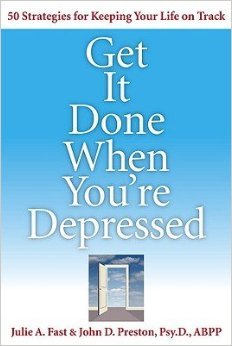
Related posts:
Bipolar Depression Arrives, but it Doesn’t Have to Stay!
Plan your bipolar disorder goals….
Bipolar disorder and hope
August 3, 2016
Hortensia and the Magical Brain: I would love your help in finding a subtitle for my new book!
 I’d love your help choosing a sub-title for my next book! I’m moving forward with a book of poetry for kids who have serious mental health disorders. It’s whimsical and manages to be fun- despite the intense topic.
I’d love your help choosing a sub-title for my next book! I’m moving forward with a book of poetry for kids who have serious mental health disorders. It’s whimsical and manages to be fun- despite the intense topic.
It’s called Hortensia and the Magical Brain.
The book is for parents, care givers and health care professionals to read to kids with symptoms of bipolar disorder, depression, anxiety, psychosis, anger and aggression and ADHD symptoms, just to name a few.
It’s fantastical- in other words, though I will keep it original, it’s a Harry Potter type book where reality and the magical intermix in a fun and educational way.
Here is an original sketch of Hortensia and the Bipolar Witches from illustrator Kaytie Spellman’s magical drawings. I have added a short poem below so that you can see the tone. Our main character Hortensia is keeping the bipolar disorder witches behind the door in this sketch! Hortensia’s nickname is Pickle.
Bipolar Lullaby #2
Three bipolar witches are toiling and mixing their brew
Their spills and their hexes are coming for you
Your brain has a door, don’t let these girls in
Shut it tight, dear Pickle, don’t let the girls win
***
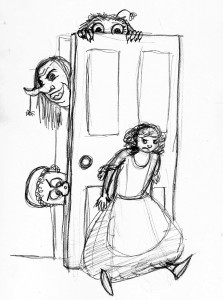
Titles! They are so important. I originally thought of Bipolar Lullabies, but the poems and other parts of the book are about more than bipolar disorder. The subtitle has to mention mental health in some way- the book is very much about specific symptoms, especially mania, depression, psychosis and anger.
Here is what I have now. The title does NOT have to appeal to kids. It needs to appeal to those buying the book to read to the kids: parents, caregivers and health care professionals. The kids will be drawn in by the drawings and poetry.
Title: Hortensia and the Magical Brain
Subtitle example: Poetry for Kids with Mental Health Disorders
The subtitle needs keywords in order to help sell the book- I like Hortensia and the Magical Brain, but am not thrilled with my subtitle.
Let me know what you think by visiting my Julie A. Fast Facebook page and leaving your comments not he post where I ask for your help.
Thank you!
Julie
PS: We are funding this poetry project through a Kickstarter program. Details coming soon! The Kickstarter will being in September.
Related posts:
Bipolar Disorder Depression Treatment: My brain is lying to me!
Bipolar Disorder and Brain Chatter
Bipolar Disorder Brain Tracking – Does this happen to you?
Julie A. Fast's Blog
- Julie A. Fast's profile
- 67 followers


